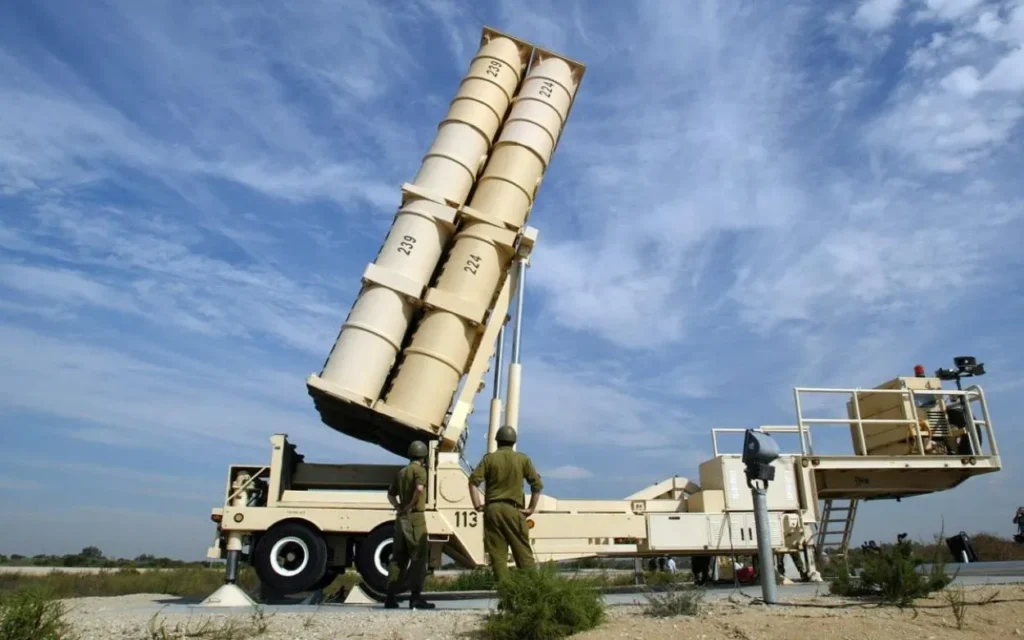On Tuesday, the Iranian Revolutionary Defence Corps, IRDC, launched a barrage of ballistic missiles into Israel, targeting Tel Aviv and other towns. The attack raised fears that a full-blown war looms in the Gulf region. For nearly an hour, sirens, sonic booms, and ambulance whirs filled the air as drones and missiles from Iran streaked across Israeli skies.
When the assault ended, the United States, the Israel Defence Forces, IDF, and the Israeli government reported that approximately 200 missiles from Iran caused minimal damage.
US President Joe Biden, who monitored the situation with Vice President Kamala Harris and top military officials, stated that Iran’s attack appeared “defeated and ineffective.”
National Security Adviser Jake Sullivan confirmed, “At this time, we do not know of any deaths in Israel. We do not know of any damage to aircraft or strategic military assets in Israel. In short, based on what we know at this point, this attack has been ineffective.”
Security experts attributed the minimal damage to Israel’s sophisticated multi-layer air defence system, which includes the Iron Dome, David’s Sling, and the Arrow, developed by Israeli and US defence industry bigwigs.
Generally known as the Iron Dome, the air defence system was developed by Israel to intercept and destroy short-range rockets, artillery shells, and mortars threatening populated areas. It is a crucial part of Israel’s broader missile defence strategy.
HOW THE IRON DOME WORKS:
Experts say the system loosely called the ‘Iron Dome’ is composed of many arms – the Iron Dome, Davids Sling and Arrow. The Iron Dome was developed by Israel Aerospace Industries company, Rafael Advance Defence System and deployed in 2011, with huge funding, nearly $3bn, from the US Government
How the Iron Dome Works:
Detection and Tracking: The Iron Dome system relies on advanced radar technology to detect and track incoming projectiles. Once a rocket is fired towards Israel, the system’s radar detects it and calculates its trajectory.
Threat Analysis: The system then assesses whether the incoming rocket will likely hit a populated area or critical infrastructure. If the missile is expected to land in an open area with no threat, the system may choose not to intercept it, thereby conserving resources.
Interception: If the system identifies a threat, a Tamir interceptor missile is launched to intercept the incoming projectile. The interceptor is guided by radar to collide with the rocket in midair, usually outside of populated zones. The collision causes the projectile to detonate harmlessly in the sky, minimizing damage.
Accuracy and Adaptability: The Iron Dome is highly mobile and adaptable to different environments. It is reported to have a high success rate (around 90%), depending on the nature of the conflict and the intensity of incoming fire.
The system is designed to protect urban areas and key military or civilian infrastructure from a range of short-range threats, particularly in regions where Israel has faced frequent rocket fire from groups like Hamas and Hezbollah.
David Sling (Magic Wand)

It is an Israeli air and missile defence system designed to intercept and destroy a wide range of aerial threats. It was co-developed by Israel’s Rafael Advance Defence Systems and Raytheon, an American company to intercept and destroy short-range ballistic missiles, large-calibre rockets, and cruise missiles. It fills the gap between the Iron Dome (for short-range threats) and the Arrow systems (for long-range ballistic missiles).
Components:
- Stunner Missile: The interceptor missile used by David’s Sling, known for its high flexibility and dual seeker (electro-optical and radar) for precise targeting.
- Multi-Mission Radar (MMR): Provides tracking and guidance for the interceptor missiles.
- Battle Management Centre (BMC): Coordinates the detection, tracking, and interception processes.
Capabilities
- Range: Effective against threats at ranges of 40 to 300 kilometres.
- Speed: Capable of intercepting targets travelling at speeds up to Mach 7.
- Multi-Layered Defence: Integrates with other Israeli defence systems to provide a comprehensive shield against various threats.
It has proven in various tests and real-world scenarios, enhancing Israel’s defensive capabilities against regional threats.
Arrow system:

It is Israel’s long-range missile defence designed to intercept ballistic missiles, particularly those carrying weapons of mass destruction (WMD), such as nuclear, chemical, or biological warheads. It forms the upper tier of Israel’s multi-layered defence alongside the Iron Dome (short-range) and David’s Sling (medium range).
Key Features:
Purpose: The Arrow system counters long-range ballistic missiles, particularly from countries like Iran or Syria, which pose a significant threat to civilians and infrastructure due to their speed and potential payloads.
Components:
Radar: The Green Pine radar detects and tracks incoming missiles over long distances, handling multiple targets simultaneously.
Battle Management Center: Processes radar data, calculates missile trajectories, and launches interceptors if necessary.
Interceptors:
Arrow 2: Engages missiles in the upper atmosphere during their terminal phase.
Arrow 3: Intercepts missiles in space, neutralizing threats before they re-enter the atmosphere.
Interception Mechanism: The system uses hit-to-kill technology, ensuring that interceptors collide with incoming missiles to destroy them. Arrow 3’s interception in space minimizes the risk of WMD fallout on Earth.
Deployment: Part of Israel’s Homa defence program, Arrow is deployed at strategic locations and can integrate with systems like the U.S.’s THAAD or NATO’s missile shield for multi-layered protection.
The Arrow system is crucial to Israel’s defence, protecting long-range missiles carrying WMDs. Its dual interception capabilities in both the atmosphere and space enhance Israel’s national security by reducing potential damage to cities and infrastructure.
































